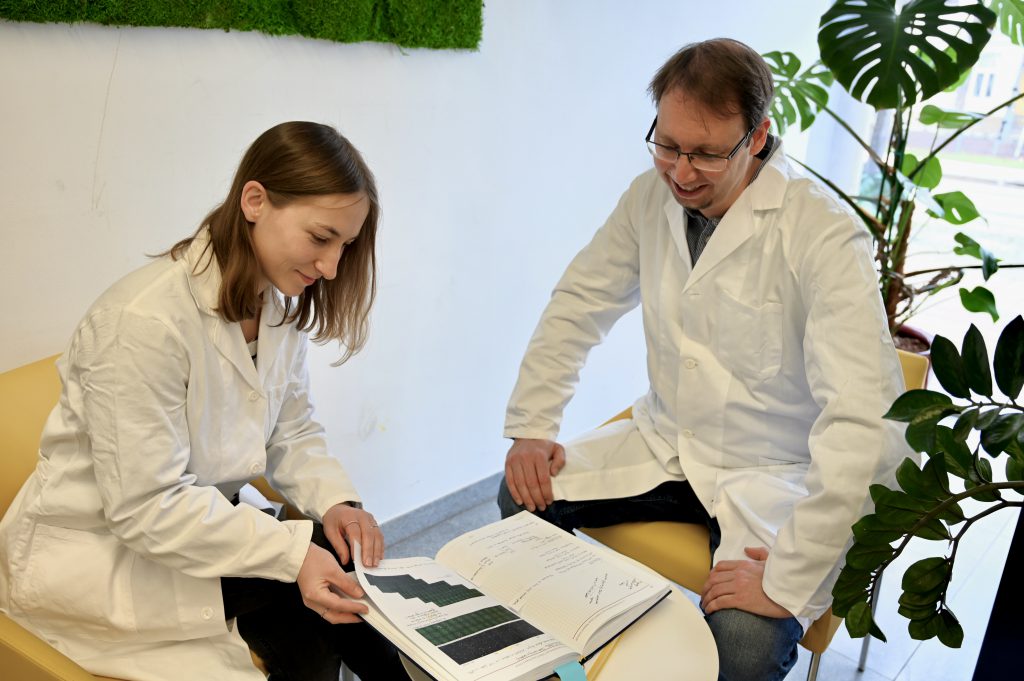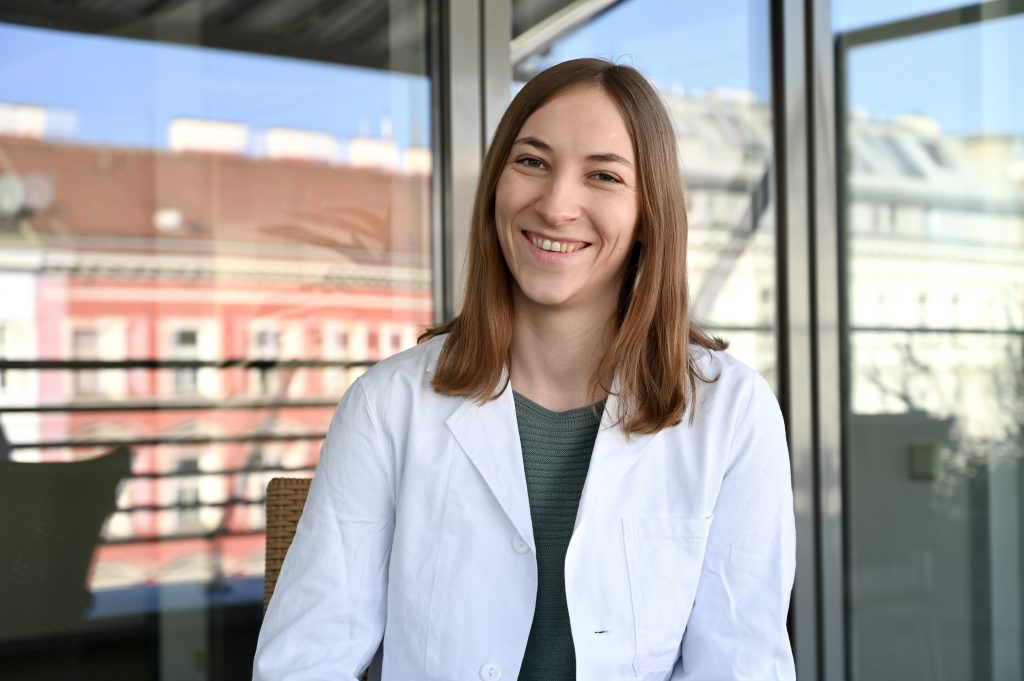Drug combination shrinks childhood cancer in zebrafish

(Vienna, 9.3.2023) A combination therapy against childhood bone cancer is efficient in living organisms: if the tumor is transplanted into fish larvae and treated with certain drugs, it shrinks significantly or disappears completely. However, the journey will still take a while before these drugs can be applied in children, say Martin Distel, PhD, from St. Anna Children’s Cancer Research Institute and co-authors. The results were published in the journal Cancer Letters.
Zebrafish larvae facilitate the search for drugs against aggressive childhood bone and soft tissue tumors, so-called Ewing sarcomas. Tumor development in fish larvae takes only 24 hours and can be followed simultaneously in the transparent organisms. Scientists at St. Anna Children’s Cancer Research Institute have now developed a workflow that allows the semi-automated testing of up to twelve (combination) therapies against tumor cells in just one week. “We have found three drug combinations that eradicate or at least significantly shrink the tumor,” explains Sarah Grissenberger, MSc, first author of the publication and PhD student in Martin Distel’s team.
Activating cell death in tumor cells
The simultaneous treatment of fish larvae with two agents that re-enable “programmed cell death” in the tumor cells was most effective. “The body protects itself by inducing programmed cell death, if something is wrong with the cells,” Sarah Grissenberger explains. “Tumor cells, however, will do anything to survive and turn off this mechanism. By using a specific drug combination, we reactivate this program.” This “killer combination” (of an MCL-1 and a BCL-XL inhibitor) has so far only been tested in cell cultures. Now the researchers present the first results from a living organism: “The tumor disappears completely when we apply these drugs to fish larvae,” says Martin Distel. Two other combination therapies (each with an MCL-1 or BCL-XL inhibitor plus irinotecan) have never been tested before, but in the present work they induced a significant reduction in tumor size.
Unfortunately, the highly effective treatment is also associated with many side effects – as was shown in further experiments. “If you give the drugs one after the other, they are better tolerated, but also less effective,” Martin Distel says. However, since different compounds with the same mechanism of action already exist, there are still many possible ways to reduce side effects, he says. “Drug development, however, is a long process. In my lab, we are working intensively on the basic mechanisms, but unfortunately a lot of water still has to flow under the bridge before it can be used in children.”
First step toward new treatment
However, it is already a huge step forward, that many drugs can be tested in such a short time in a living organism, the scientist explains. “There are only a few laboratories in the world that are able to perform such screenings,” Martin Distel points out. The experiment starts with the introduction of tumor cells from patients or from cell lines into fish larvae. After 24 hours, a tumor develops, which is then treated immediately. After another two days, the effect is clearly visible.
“This means that potential new therapies can be narrowed down at a very early stage, which saves us a lot of time”, Distel explains. “Ewing sarcoma is still one of the most difficult-to-treat pediatric cancers. The fact that we identified drugs with great efficacy in living organisms is an important step forward. Further investigation towards clinical application is desirable.”

– – –
About Ewing sarcoma
Ewing sarcoma is a very aggressive bone and soft tissue tumor that occurs primarily in children and adolescents. With risk-adapted, multimodal therapy the 3-year survival rate is between 50 and 80%. Scientists at St. Anna Children’s Cancer Research Institute strive to enable a cure for significantly more patients. Current chemotherapies have considerable side effects that impair the quality of life in the long term and potentially cause secondary malignancies. Nevertheless, they unfortunately do not help all patients. At St. Anna Children’s Cancer Research Institute, not only Martin Distel and his team, but also the groups of Heinrich Kovar, Eleni Tomazou and Florian Halbritter dedicate their research to the investigation of Ewing sarcoma and potential new therapy options for this disease.
—
About Martin Distel
Dr. Martin Distel (PhD) studied Molecular Biotechnology at the Technical University Munich, Germany, and at Lund University, Sweden. He performed his PhD at the Helmholtz Center Munich, Germany, under the supervision of Reinhard Köster, developing genetic gene expression tools to study the development of the cerebellum in zebrafish. He also worked with Daniel Razansky at the Helmholtz Center Munich to bring opto-acoustic imaging to zebrafish. For his postdoctoral work in the field of zebrafish hematopoiesis, he joined the lab of David Traver at the University of California, San Diego.
In 2014 Martin joined CCRI as a Principal Investigator, where he established a zebrafish lab and a zebrafish facility. Since 2017, he is also head of the Zebrafish platform Austria for preclinical drug screening at CCRI.
About Sarah Grissenberger
Sarah Grissenberger, MSc, graduated from the University of Technology in Graz with a Bachelor’s degree in Molecular Biology and a Master’s degree in Biochemistry & Molecular Biomedicine. She completed her master’s degree with honors. For her PhD thesis, she is working on different zebrafish models for Ewing sarcoma in order to better investigate this tumor type and to develop new, targeted therapeutic approaches. For the implementation of the present project in the group of Martin Distel she received a DOC-Fellowship of the Austrian Academy of Sciences.

Publikation
High-content drug screening in zebrafish xenografts reveals high efficacy of dual MCL-1/BCL-XL inhibition against Ewing sarcoma
Sarah Grissenberger, Caterina Sturtzel, Andrea Wenninger-Weinzierl, Branka Radic-Sarikas, Eva Scheuringer, Lisa Bierbaumer, Vesnie Etienne, Fariba N´emati, Susana Pascoal, Marcus Totzl , Eleni M. Tomazou, Martin Metzelder, Eva M. Putz, Didier Decaudin, Olivier Delattre, Didier Surdez, Heinrich Kovar, Florian Halbritter, Martin Distel*
*Corresponding Author
Cancer Letters 2023; Feb 1; 554: 216028; DOI: 10.1016/j.canlet.2022.216028
Funding
This work was supported by the Austrian Research Promotion Agency (FFG), Alex’s Lemonade Stand Foundation, the Austrian Science Fund and a DOC fellowship of the Austrian Academy of Sciences.